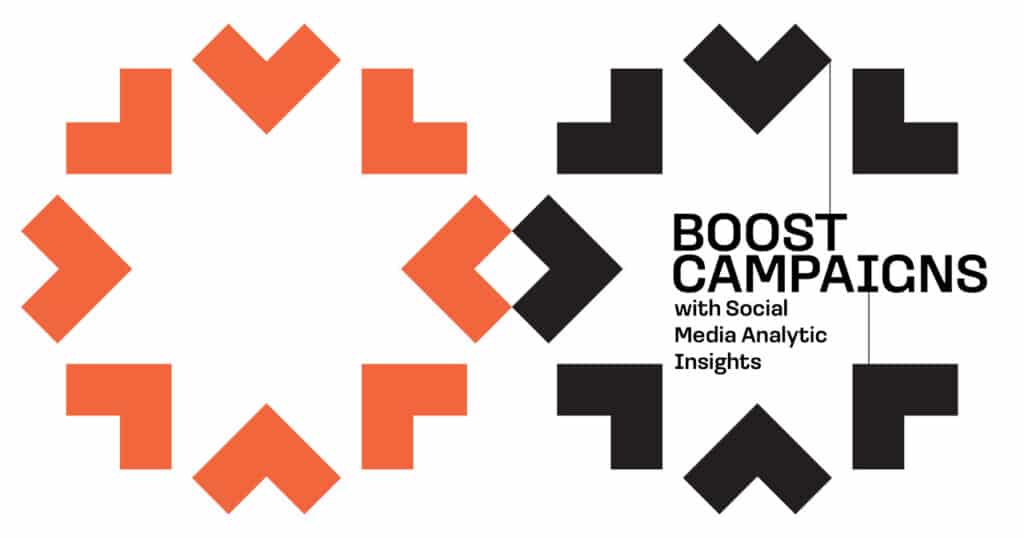Key pillars of modern marketing strategies lie in the digital world, particularly through social media. These platforms enable companies to connect with customers, drive sales, and build lasting brand loyalty. So, are social media efforts worth their value? That’s where analytics plays a role in making people sure.
Getting the best performance for businesses through social media certainly has specific challenges. The prerequisite for the best performance is social media insights. The right usage of social media analytic tools allows brands to track campaign efficiency by readjusting whatever may not meet their objectives and driving an outcome from the results. With this guide, We’ll take you through a need-to-know understanding of what social media analytics are and walk you through tracking some metrics that guide actionable steps to improve your campaigns for your social media efforts.
What Is Social Media Analytics?
Social media analytics gathers data on sites such as Facebook, Instagram, Twitter, and LinkedIn. With the application of analytical tools in social media analytics, companies will follow through with several metrics, giving them useful social media insights into what an audience likes, content engagement, and how a campaign performs in general.
All this puts marketers in a better position to know what to do and where they should change to get the most effect. This can provide business-oriented data-driven marketing strategies to better decide the nature of content, advertising, and social media strategy.
What Are the Benefits of Tracking Social Media Analytics?
The most crucial actions businesses have to take for social media campaigns to work effectively include the tracking of social media analytics. Below are some of the most significant benefits a company will experience with social media insights in terms of campaign performance.
Improved Campaign Performance
Tracking social media analytics is one of the major advantages that will help improve social media campaigns. It allows you to closely keep track of your metrics and find out what kind of content works for you by observing trends and patterns. For example, if one post has a higher rate of engagement, it is known that your audience likes that particular content. You can create identical content in the future and replicate successful tactics.
Measurable ROI
This social media analytic tool gives businesses some measurement to weigh the return on investment in their social media efforts. Whether by leads, conversions, or direct sales, social media insight stamps performance because of how it helps brands point out where they stand. Businesses with metrics may be better placed to determine clearly which campaign best carries performance and be much more prepared.
Enhance Audience Understanding
This begins with knowing your audience. Social media analytics can drill down much deeper than the demographics, behavior, and preferences of your audience. You can know exactly at what time your audience was most active, which topic they would engage the most with, and which types of posts work best for them. This will lead your content strategy in ways of tailoring your message toward the interests of your audience.
Data-Driven Decision-Making
The biggest power for social media analytics gives a business a data-driven marketing strategy without any of the guessworks. No more gut-feel stuff. Whether you want to be selective regarding which content to post and when to post it as well as which ads need to be run, social media insights give a lot on that decision that would drive toward a better performance level for the campaign.
What Are the Key Metrics for Tracking Analytics?
With tracking social media analytics, some major key metrics are set to monitor the effectiveness of your campaign. Every measure provides a unique insight into your audiences’ behavior and engagement with content optimization strategies.
Engagement Rate
- The engagement rate is a key metric for evaluating social media campaigns.
- It measures audience interaction with your content, including likes, comments, shares, and clicks.
- A higher engagement rate indicates that your content resonates with the audience.
- Tracking the engagement rate helps identify which posts are performing well.
- Analyzing engagement rates provides insights into why certain content drives interaction.
Impressions Vs. Reach
- Impressions. Tracks how many times your content has been displayed.
- Reach. Measures how many unique users have seen your content.
| Importance of Both Metrics | Both metrics give insight into your content’s visibility and overall performance. |
| High Reach, Low Impressions | Indicates that your content is being shared but not viewed multiple times. |
| High Impressions, Low Reach | Suggests that your content is being repeatedly seen by the same audience. |
Audience Demographics
Knowing your target audience is pivotal to effectively generating content. Audience demographics, encompassing age, gender, location, and interests, could help guide the generation of content toward the right people. Advanced social media analytic tools can even spit out demographic insights down to every minute detail, which allows for much more targeted campaigns and increases personalization.
Click Through Rate (CTR)
Another metric is click-through rate, measuring how many people click through to your links. It is a good metric by which to measure the success of call-to-action, buy now, or sign up today, among others. Any high CTR reflects that most of the audience in your network likes what you are offering and is taking action because of your content.
Conversion Rate
Conversion rate is the number of people who perform a desired action, in other words, buy or join a newsletter. Conversion tracking allows you to know the effectiveness of your social media campaigns in terms of driving valuable actions. You will be able to find out what kind of campaign and content is driving leads or sales by analyzing the conversion rate.
Sentiment Analysis
Analyzing the sentiment of an audience on the brand in question is one of the aspects that makes it possible for one to envisage what the masses might be thinking. This implies that it is possible to determine through social media analytic tools if the target audience is speaking badly about the brand, well about the same, or silent, this way. One will be able to understand whether the audience loves or dislikes the products and services, and it will be able to know how to deal with adverse comments or capitalize on positive comments.
7 Ways To Use Social Media Analytics Effectively
Now that you understand the importance of social media analytics, let’s dive into seven actionable strategies for using these insights to improve social media campaigns.
Know Your Audience
Understand the target group that engages with your posts: This becomes possible when social media analytics are conducted in order to understand who engages with what sort of post at what specific time. With such data, one becomes aware of what their audience is most likely attracted by so that corresponding content can be drafted in a bid to evoke it more and maximize engagement.
Set Goals & KPIs
Clearly and measurably state what you want to achieve with your social media campaigns, whether it is your brand awareness, traffic, or sales. This will allow you to keep the focus of having goals in place while, with a timely assessment of your strategy, through social media insights, you adjust your strategy.
Optimize Posting Times
The right timing when using social media matters a lot. Use data for different social media analytic tools for you to figure out at what particular time your audience will be very productive. When posting, make sure to post at the peak times so that you will likely be rewarded with views and engagements.
Choose Your Analytic Tools
Properly choosing social media analytic tools will ensure the proper tracking of your campaign’s performance. Tools such as Google Analytics, Sprout Social, and Hootsuite all feature in-depth features that can be used in checking your metrics. Identify what works best for you, then use it in tracking campaign performance.
Evaluate Content Performance
Monitor the performance of different types of content on social media, such as videos, images, and blog posts. Use social media insights to understand which type of content is driving the most engagement. More of that content going forward.
Analyze Ad-Specific Metrics
Most social media strategies include paid advertisements as one of the main parts. Apply social media analytic tools to track specific ad metrics like impressions, click-through rates, or conversions. This helps shape your paid social strategy better and improve the ads.
Conduct Competitive Analysis
Keeping track of competitors is the best way to remain one step ahead. Through social media analytics, monitor the campaign of your competitors, analyze their performance, and look for weaknesses in your strategy. This can offer you an insight into how to enhance your strategy.
Wrapping Up With Social Media Analytics
Social media analytics is essential for businesses looking to ensure that their campaigns perform at the highest levels. You use social media analytic tools to monitor key metrics and make decisions based on data, and you will be optimizing social media performance to yield even better results. You want to improve engagement, better understand your audience, or drive conversions, and, in each of those cases, you are in the right hands, where insight will guide strategy toward accomplishing marketing objectives.
Call to Action:
Ready to elevate your social media campaigns? Leverage social media analytic tools today to unlock data-driven marketing strategies. Need a little help getting started? Contact us now to get expert advice and personalized solutions for optimizing social media performance and maximizing your ROI!
FAQs
- What are the best social media analytics tools for beginners?
For beginners, tools like Google Analytics, Sprout Social, and Hootsuite are ideal, offering easy-to-use dashboards to track engagement, clicks, and impressions.
- How can social media insights improve content strategy?
Social media insights help you understand what content resonates with your audience, allowing you to refine your strategy for more engaging posts that drive conversions.
- What is the role of social media analytics in measuring ROI?
Social media analytics tracks metrics like conversions and leads to measure the ROI of your campaigns, helping you identify which efforts bring the best returns.
- How do I choose the right metrics for social media analytics?
Focus on metrics aligned with your goals engagement rate for engagement, conversion rates for sales, and reach vs. impressions for visibility.
- How often should I check social media analytics?
Daily checks are good for real-time engagement, while weekly or monthly reviews provide a comprehensive view of campaign performance to optimize social media strategies.









